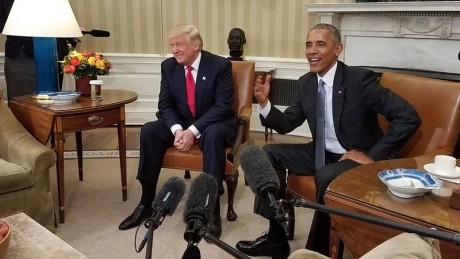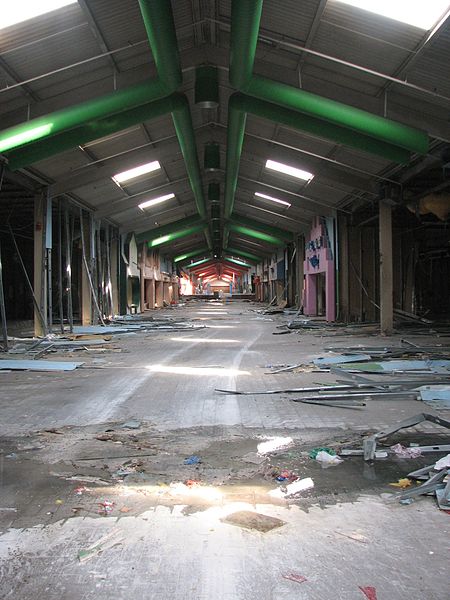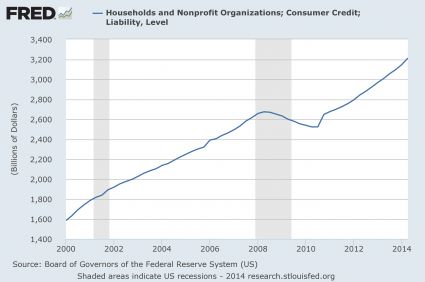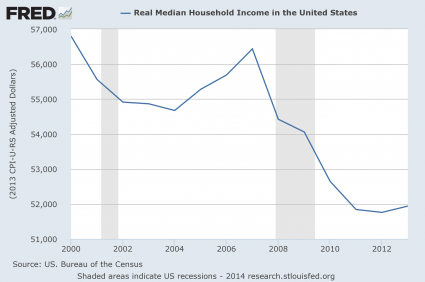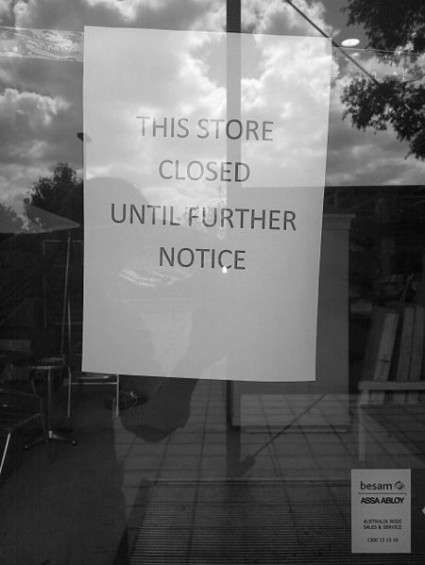 The biggest shopping day of the year is almost here, and marketers are working hard trying to extract as much money from U.S. consumers as possible. Unfortunately, it is becoming increasingly difficult to get consumers to open up their wallets, because many of them are already drowning in debt. As a society, we have been trained to think of this as “the happiest time of the year”, and for many Americans the most important part of the holiday season is opening presents on Christmas morning. So there is a tremendous amount of pressure to spend a lot of money on presents, but this often leads to high levels of credit card debt. In fact, a survey that was just released discovered that 48 million Americans “are still paying off credit card debt from last holiday season”…
The biggest shopping day of the year is almost here, and marketers are working hard trying to extract as much money from U.S. consumers as possible. Unfortunately, it is becoming increasingly difficult to get consumers to open up their wallets, because many of them are already drowning in debt. As a society, we have been trained to think of this as “the happiest time of the year”, and for many Americans the most important part of the holiday season is opening presents on Christmas morning. So there is a tremendous amount of pressure to spend a lot of money on presents, but this often leads to high levels of credit card debt. In fact, a survey that was just released discovered that 48 million Americans “are still paying off credit card debt from last holiday season”…
The holidays can be hard: cooking elaborate meals, facing frigid temperatures, making travel plans that please everyone.
Overspending, however, is too easy. In fact, about 48 million Americans are still paying off credit card debt from last holiday season, according to a NerdWallet survey conducted by The Harris Poll.
Sadly, some of those consumers will end up paying the credit card companies more than twice what those Christmas presents originally cost, and it can be exceedingly difficult to ever get ahead when you are trapped in a seemingly endless cycle of debt.
So why do people do it?
Well, according to one financial therapist many Americans are chasing an “emotional experience” this time of the year…
Gift-buying requires money, time and energy when you may already feel overwhelmed, says Los Angeles-based financial therapist Amanda Clayman. During the holidays, “we’re chasing a sort of emotional experience,” she says. Think: the love and happiness of a Hallmark movie.
But feelings of grief or longing may be more realistic. “This is a sad and lonely time for many people,” says Sarah Newcomb, behavioral economist for Morningstar. Shopping (for anything or everything) can be a convenient coping mechanism.
We want what we see on television, but what we see on television is not real.
In the end, many Americans leave the holiday season feeling deeply disappointed, because what they were chasing was just an illusion.
Yes, some wealthy families will literally have hundreds of presents under their Christmas trees this holiday season, but most American families are deeply struggling these days.
In fact, over two million of us are actually living without basic necessities such as “running water or indoor plumbing”. The following comes from Daisy Luther…
A new report says that more than 2 million Americans in West Virginia, Alabama, Texas and the Navajo Nation Reservation in the Southwest are living without clean running water or indoor plumbing. They’re drinking from polluted streams. They’re carrying buckets of the same water home for washing. They’re urinating and defecating outside with no wastewater treatment.
The gap between the rich and the poor continues to grow, and at this point the wealthiest 0.1 percent of all Americans now have as much wealth as the poorest 90 percent of all Americans combined.
Let that sink in for a moment.
That is a recipe for societal disaster, and it is getting worse with each passing year.
A big reason for this is because the Federal Reserve has been artificially pumping up the financial markets, and on Monday stocks hit yet another all-time high…
The S&P 500 and Nasdaq Composite hit all-time closing highs as they rose 0.8% to 3,133.64 and 1.3% to 8,632.49, respectively. Both indexes also notched intraday records. The Dow Jones Industrial Average also had a record close, gaining 190.85 points, or 0.5% to 28,066.47.
President Donald Trump tweeted about the record, saying: “Enjoy!”
But what most Americans don’t understand is that 84 percent of all stock market wealth is owned by the wealthiest 10 percent of all Americans.
Of course the stock market bubble won’t last indefinitely. We are already in an earnings recession, and that earnings recession is expected to continue in the fourth quarter…
Earnings in the S&P 500 index SPX, +0.75% are now projected to decline 1.51% in the fourth quarter from the year before, according to a FactSet computation of analysts’ average forecasts for individual companies. An earnings recession is defined as two quarters or more of consecutive year-over-year declines, and earnings for S&P 500 components dipped in the first two quarters of 2019 and are all but certain to do so again in the third quarter — with nearly 95% of calendar third-quarter reports posted, earnings have dropped 2.34%, the biggest decline so far this year.
And about 75 percent of the time, an earnings recession leads into a full-blown recession for the economy as a whole…
Three-fourths (75%) of earnings recessions since World War II have morphed into economic recessions, said CFRA Chief Investment Strategist Sam Stovall, who told Market Watch that he has been “scratching his head” trying to reconcile analyst pessimism around earnings with continued stock-market rallies.
So the truth is that those that are celebrating what the stock market is doing are not likely to be celebrating for too much longer.
And every day we continue to get more bad news from the real economy. For example, we just learned that the largest maker of truck engines in the United States will be laying off about 2,000 workers…
Those market trends are now impacting Cummins, a Columbus, Ind., manufacturer of heavy equipment. It’s the largest manufacturer of Class 8 truck engines, claiming a 38.3% market share in 2018 over competitors like Daimler and Volvo/Mack.
Cummins spokesperson Jon Mills confirmed to Business Insider that the company, which employs some 62,610 globally, will reduce its global workforce by about 2,000. Those layoffs will be complete by the first quarter of 2020, he said.
As a “perfect storm” overtakes America, many believe that this will be the last “normal” holiday season that Americans will be able to enjoy.
It has become exceedingly clear that very hard times are coming, and quite a few experts believe that the crisis that is ahead will be even worse than what we experienced in 2008.
So enjoy the time that you are able to spend with your family and friends over the coming weeks, because major changes are already starting to happen, and our nation will soon be dealing with one major headache after another.
About the Author: I am a voice crying out for change in a society that generally seems content to stay asleep. My name is Michael Snyder and I am the publisher of The Economic Collapse Blog, End Of The American Dream and The Most Important News, and the articles that I publish on those sites are republished on dozens of other prominent websites all over the globe. I have written four books that are available on Amazon.com including The Beginning Of The End, Get Prepared Now, and Living A Life That Really Matters. (#CommissionsEarned) By purchasing those books you help to support my work. I always freely and happily allow others to republish my articles on their own websites, but due to government regulations I need those that republish my articles to include this “About the Author” section with each article. In order to comply with those government regulations, I need to tell you that the controversial opinions in this article are mine alone and do not necessarily reflect the views of the websites where my work is republished. This article may contain opinions on political matters, but it is not intended to promote the candidacy of any particular political candidate. The material contained in this article is for general information purposes only, and readers should consult licensed professionals before making any legal, business, financial or health decisions. Those responding to this article by making comments are solely responsible for their viewpoints, and those viewpoints do not necessarily represent the viewpoints of Michael Snyder or the operators of the websites where my work is republished. I encourage you to follow me on social media on Facebook and Twitter, and any way that you can share these articles with others is a great help.


